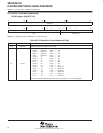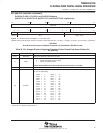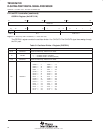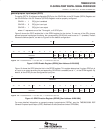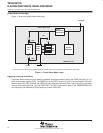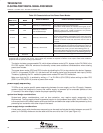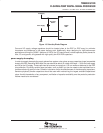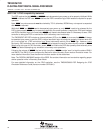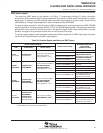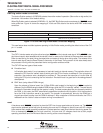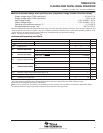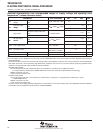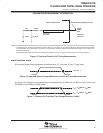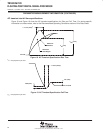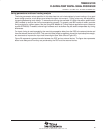
TMS320C6712D
FLOATINGĆPOINT DIGITAL SIGNAL PROCESSOR
SPRS293A − OCTOBER 2005 − REVISED NOVEMBER 2005
58
POST OFFICE BOX 1443 • HOUSTON, TEXAS 77251−1443
IEEE 1149.1 JTAG compatibility statement
The DSP requires that both TRST and RESET resets be asserted upon power up to be properly initialized. While
RESET
initializes the DSP core, TRST initializes the DSP’s emulation logic. Both resets are required for proper
operation.
Note: TRST
is synchronous and must be clocked by TCLK; otherwise, BSCAN may not respond as expected
after TRST
is asserted.
While both TRST
and RESET need to be asserted upon power up, only RESET needs to be released for the
DSP to boot properly. TRST
may be asserted indefinitely for normal operation, keeping the JTAG port interface
and DSP’s emulation logic in the reset state. TRST
only needs to be released when it is necessary to use a JTAG
controller to debug the DSP or exercise the DSP’s boundary scan functionality.
The TMS320C6712D DSP includes an internal pulldown (IPD) on the TRST
pin to ensure that TRST will always
be asserted upon power up and the DSP’s internal emulation logic will always be properly initialized when this
pin is not routed out. JTAG controllers from Texas Instruments actively drive TRST
high. However, some
third-party JTAG controllers may not drive TRST
high but expect the use of an external pullup resistor on TRST.
When using this type of JTAG controller, assert TRST
to initialize the DSP after powerup and externally drive
TRST
high before attempting any emulation or boundary scan operations.
Following the release of RESET, the low-to-high transition of TRST must be “seen” to latch the state of EMU1
and EMU0. The EMU[1:0] pins configure the device for either Boundary Scan mode or Emulation mode. For
more detailed information, see the terminal functions section of this data sheet.
Note: The DESIGN−WARNING section of the BSDL file contains information and constraints regarding proper
device operation while in Boundary Scan Mode.
For more detailed information on the JTAG emulation, see the TMS320C6000 DSP Designing for JTAG
Emulation Reference Guide (literature number SPRU641).



